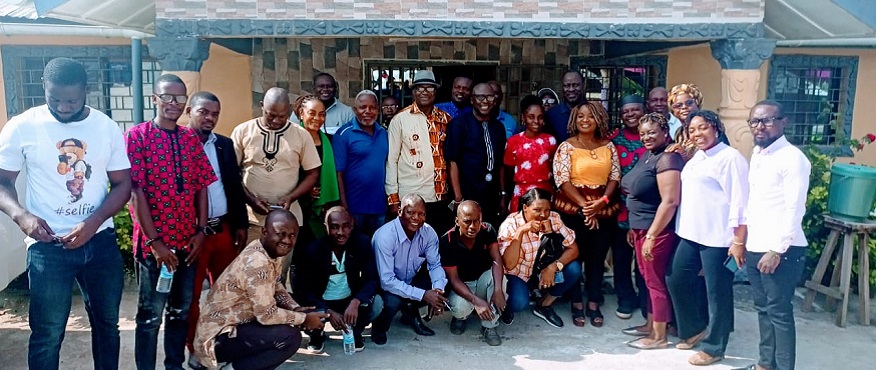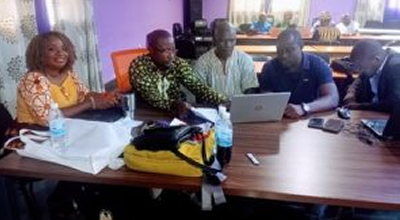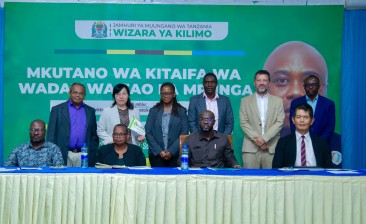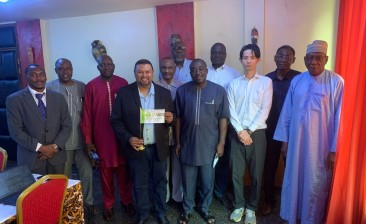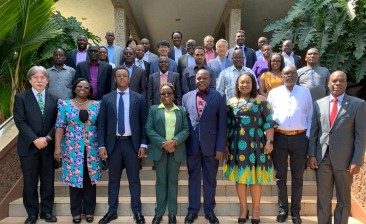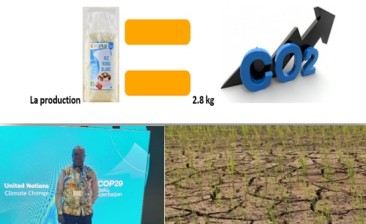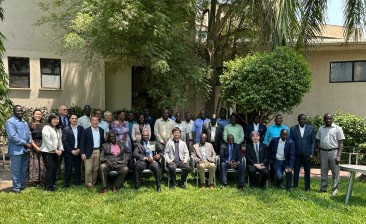Liberia, July 2022
CARD Working Week for developing NRDS2 project concept notes in Liberia
Rice is a very important food crop in Liberia, the per capita rice consumption in Liberia 133kg is one of the highest in Africa. The country continue to import large quantity of rice in order to meet local demand, this is putting much pressure on the scarce foreign reserve. Liberia was among the second group countries of the first phase of CARD. The Liberia NRDS-1 which was formulated in 2012 came to an end in 2018. Through a CARD working week held in March 2019 the task force members met and revised the first generation NRDS to form the second generation NRDS. However, further action was delayed due to the request of the Liberia government to USAID to help to further improve the private sector component, enabling the private sector to drive the rice sector development of Liberia. Upon the completion of the said assignment by USAID the task force proposed the development of concept notes.
The task force responsible for overseeing the drafting of investment proposals (concept notes) for the implementation of the second Liberia NRDS recently met in Buchanan in Bassa County through a CARD working week (4-8 July, 2022). The Minister of Agriculture was represented by the Director of Planning Department, in presenting the goodwill message of the Minister he pointed out that the Minister is eagerly waiting for the outcome of the exercise and that the government will present the concept notes to development partners for collaboration in implementation.
The task force grouped the interventions into four thematic areas including i) private sector development ii) research, technology adoption and capacity building iii) seed system development iv) transport and quality assurance. These thematic areas are aligned with the strategic components of the Liberia NRDS2 (2018-2030).
Key outputs/results
From the aforementioned thematic areas the task force developed nine (9) concept notes during the working week as shown in Table 1 below.
From the private sector development perspective 2 concept notes were formulated. In formulating the first CN, the members of this group acknowledged that the private sector need to drive demand in the sector by increasing their milling potentials, therefore the proposal is a Public, Private Partnership (PPP) arrangement to rehabilitate and upgrade dilapidated mills across the country and also establish integrated rice mills in rice producing areas. The second concept note deals with organizing the farmers into out-growers schemes and building their capacity to enable them supply the needed quantity of paddy for the operation of the mills.
The research, technology adoption and capacity development group formulated 3 CNs, it was argued that the Central Agricultural Research Institute (CARI) need to establish at least 4 more outstations in order to achieve her mandate, more experts need to be trained (breeders, agronomist, seed technologists etc) to man the new outstations. The second CN deals with purification of the farmers preferred rice varieties, the viability of such varieties has dropped over the years due to contamination through over use, finally for the third CN the group agreed that the seed testing laboratory at CARI is outdated and need to be upgraded by providing seed testing tools, also more infrastructures such as research fields need to be developed.
The seed system development thematic group formulated 2 concept notes which are geared towards building the capacity of the certified seed (CS) producers to produce quality seeds which will enhance the adoption of CS. The usage of CS is currently very low. In order to increase productivity the second CN proposed the development of irrigated lowland both for seed and paddy rice production, this will help the farmers increase production to service the mills that will be established in CN 1 above.
The transportation and quality assurance thematic group formulated 2 concept notes, one is for the establishment of quality control assurance and paddy grading standard which will lead to quality paddy and milled rice. Currently there is no standard for paddy therefore in one milled bag you could see different kind of rice varieties which is not good for quality standard. Secondly in order to reduce transportation costs for paddy procurement the second CN proposed the establishment of more aggregation centers and the training of operators on post- harvest handling to improve quality of domestic rice in the market.
Table 1: List of Concept Notes
| Strategic component | Thematic areas | Title of Project |
|
1 |
Private sector development | for increased investment in rehabilitation/upgrading of rice hubs |
| Enhancing rice contract-farming/out-growers operations | ||
| 2 | Research, technology adoption and capacity building
|
Establishment of research station and strengthen capacity of researchers |
| Purification of Local Rice Varieties for High Yield And Disease Resistance | ||
| Upgrading Seed Testing Laboratory and Infrastructures for CARI | ||
| 3 | Seed system development
|
Development of Irrigated lowland for rice production in Liberia |
| Capacity Strengthening for certified rice seeds production and handing in Liberia | ||
| 4 | Transportation and quality assurance
|
Support for the establishment of quality assurance and paddy grading standards |
| Support for the establishment of aggregation centers and capacity building for rice production in post-harvest technology |
Way forward:
the participants agreed to finalize the draft concept notes within a week and share with the focal point, after compilation/finalization of the concept notes by the focal point, the NRDS2 with the formulated concept notes will be taken for validation with stakeholders through the Ministry of Agriculture management by the end of July 2022
Workshop in session
